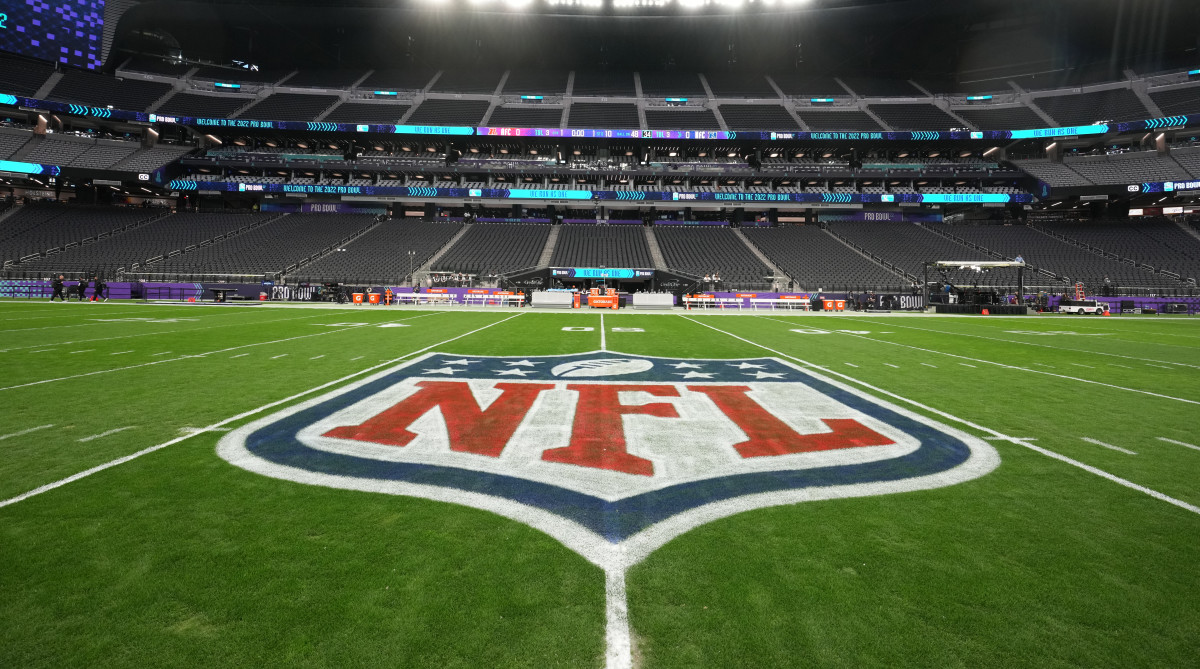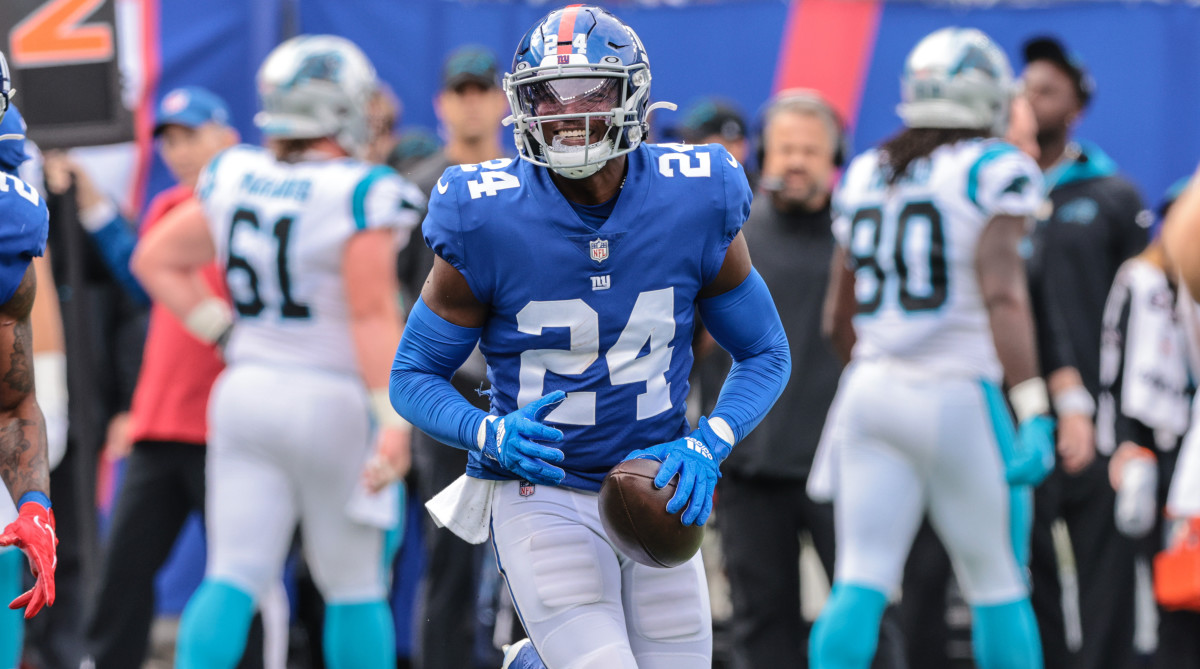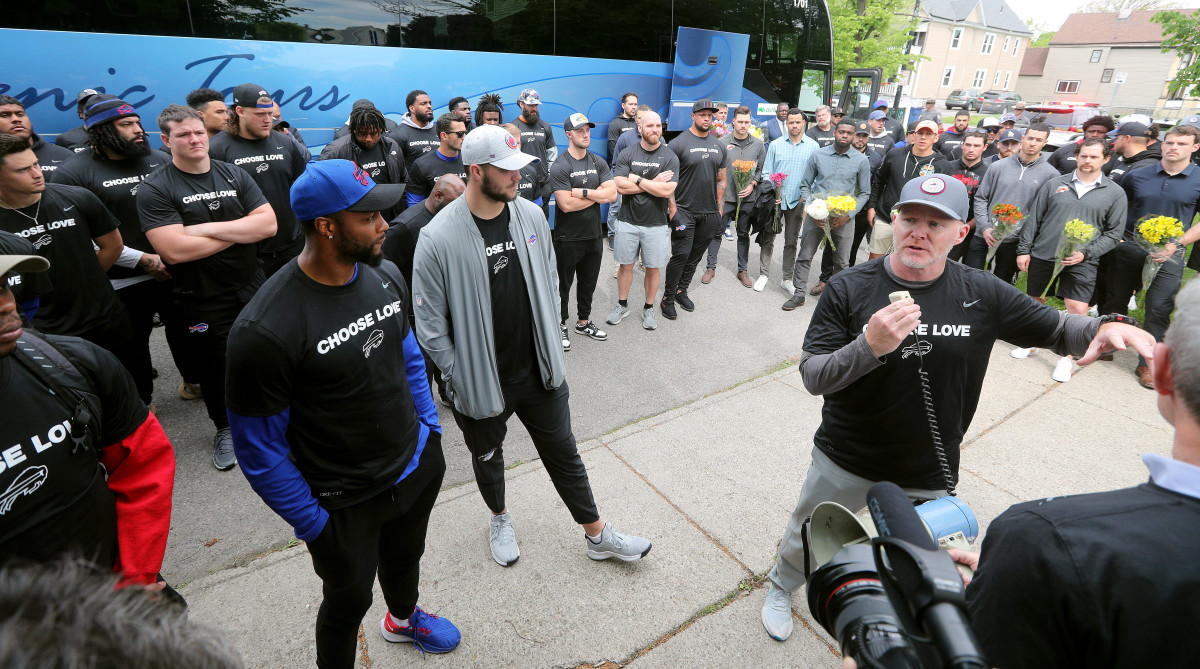Inside the Plans for the NFL’s First Diversity Networking Event

It was less than three months ago at the Indianapolis J.W. Marriott, and NFL commissioner Roger Goodell and Hall of Famer Tony Dungy were hearing the same things that so many others have heard the last few years.
Before them was a group of seven assistant coaches and seven executive scouting types who had interviewed for head coaching and general manager positions the month before. Male. Female. White. Black. And all had a similar feeling for why their efforts to land their dreams jobs had fallen sort. Which, really, matched the feelings of so many others who weren’t in the room on that cold winter day.
“What we did was have a larger conversation about the hiring process, and how you can achieve that head coach or GM position and some of the challenges the people had,” said Jonathan Beane, the NFL’s chief diversity and inclusion officer. “And it was very clear. We had two candidates that had gotten several interviews during the last cycle for head coach that said, ‘We found it very difficult to have that conversation for a head coach position with an owner that I’ve never met, that I have zero relationship with, and I’m trying to get them to know me, my philosophy and how I lead in a very short period of time.’
“They found it very, very difficult. And we heard that on the coaching side, and it was the exact same story on the front office side as well.”
This result of that conversation, and so many others, will be manifested next week.
NFL owners will convene Monday for their annual spring meeting, and this one will have more meaning than most. The normal gaggle of team owners, executives and league office types will be in Atlanta, at a posh Buckhead hotel for the summit, but so too will be a group of 63 participants—three from the league office, and 60 from the teams—for what Park Ave. has billed as the inaugural NFL Coach and Front Office Accelerator Program.
In short, as Beane said, the idea is the product of how a lot of coaches and scouts have felt after falling short in the interview process over the last few years, as the NFL approached a flash point in its efforts to diversify its head coach and GM ranks. In 2019, five of eight head coaches fired were Black, and just one of eight of those openings was filled by a Black coach. Since, just five of 20 openings have gone to coaches of color, keeping the NFL’s overall number low (five: Mike Tomlin, Mike McDaniel, Lovie Smith, Ron Rivera and Robert Saleh).
And while the NFL’s made more progress on the GM front—five of 12 openings over the last two cycles have gone to candidates of color—the lack of headway on the coaching front was enough to push Goodell and the league office to get more aggressive.
The meeting in February in Indy was about finding the right way to do it, and on Monday, 63 rising stars in the profession will reap the benefits. Or that’s at least the hope here.
In this week’s GamePlan, we’re going to explain what that’s going to look like.

Because of some of the NFL’s more recent bumps in its diversity effort—or, more to the point, the bumps the teams have created—there’s still some skepticism about how much what unfolds next week will work when it counts, in the next hiring cycle in January.
“My only hope is for owners to really be open to the thought of this,” one of the 63 invitees told me Wednesday night. “That’s genuinely my only hope. If they’re closed off and not receptive, this will be a debacle that’ll end bad. And I hope these seminars aren’t centered around leadership, because that’s the one quality that the men and women that are invited already possess.”
In short, you can take that as a request for the NFL to read the room correctly on this one.
For their part, people at the league office would say that this particular event is a result of listening to those who’ve been involved in the hiring process. And so what they’re doing, really, is a product of what they think the invitees want and need out of it.
“We’re listening,” said Beane. “And when I say we, it’s not me, it’s the [Diversity, Equity and Inclusion] Committee that really came up with the concept that, Look, this is the feedback we’re getting. Candidates are saying that they don’t have access and opportunity to meet the decision-makers, in particular club owners.”
The meeting in Indy, and the decision to put seven candidates on both the coach and GM sides in front of Goodell, was the start, and that spilled into the NFL’s annual meeting in March, at which the DEI committee, led by Steelers owner Art Rooney, led two meetings, and the owners then held a closed session on the subject. Which led to the decision to invite a list of promising folks to Atlanta next week.
It's necessary because, for the most part, those types don’t cross paths with owners much. Most owners don’t attend the tentpole football events (Senior Bowl, combine). And of the football-side people, only head coaches and GMs, really, are at any of the owners meetings, save for a small group (and these are mostly cap people) who go to the labor seminar in Dallas in December.
So, really, to get an offensive coordinator or a director of player personnel in front of the larger group of owners was going to take effort, and now that effort has been made.
How it will go remains to be seen. But we can at least give you a snapshot here of the plan.
The NFL is going to try to teach the invitees stuff they may not know. Many of the 63 coming to Atlanta spend their workdays on practice fields or in offices and meeting rooms studying and teaching the game. Where the gaps lie for many is elsewhere, and some of the time spent in Atlanta will be dedicated to filling those in.
“We have certain workshops as it pertains to the business of football,” said Beane. “It could be how to create your vision and philosophy once you have the role. Once you have the role as head coach or GM, how can you create that philosophy? How do you manage a club? How do you manage the operations of a club outside of football operations? How can we take advantage of applied learning as we go through this, where we can give the candidates a narrative that they would then act upon based on things that have happened in the past?”
“Those are the kinds of things we want to have in place for those two days.”
There will be speakers who will give the invitees valuable perspective. The league has invited team presidents, head coaches, GMs and league office personnel in to speak and will have an external speaker who is a leader in his field in as well.
Beane, for the record, wouldn’t give me names.
“It’s a good list, though, Albert,” he said. “It’s a very good list.”
There’s a social component to it, too. The informal piece will be a reception Monday, which will allow for the coaches and scouts to hang out with the owners in a relaxed environment. On Tuesday, there’ll be more formal meetings with owners involved in smaller groups, with the invitees rotating around to ensure that everyone at least gets the opportunity to meet everyone else.
“We have about three hours of time between owners with these participants, and we want to make sure a certain candidate doesn’t spend two hours with one owner,” Beane said. “You want to move them around, so we’re going to be shifting them around strategically to ensure that the owners are meeting as many of the participants as possible and vice versa.”
The league will have “facilitators” from its offices (like Beane), as well as reps from the Fritz Pollard Alliance and a professional development firm called Stretch, in the rooms to try to help keep the conversation moving and make sure all are getting the most of the time spent. Which, the NFL hopes, will dovetail nicely into the less formal meet-and-greet the night before, to give the invitees a lot to go home with.
“The overriding goal is to have the engagement of the participants and the owners, in addition to other decision-makers with the clubs, and for relationships to be built,” Beane said. “And to also be strategic and sure that we maximize the number of owners and also the number of participants that are engaging with each other. But it’s also important for the participants to get to know each other, and to network with each other as well. So that is a key part of this, too. …
“We want all the people involved to size each other up. We want there to be discomfort. Discomfort is good. We want there to be everyone saying, ‘Hey, this is difficult, but this is also rewarding.’ This is not built for owners to be comfortable. This is not built for participants to be comfortable. What it’s built for is to develop real, authentic, genuine relationships.”
So if you’re wondering what Beane hopes candidates leave Tuesday night with, here it is.
“I hope that they walk away having met and engaged with, and developed relationships with, the vast majority of our owners and other senior leaders at the clubs,” Beane said. “I hope they walk away with long-lasting relationships with other great leaders that happen to be diverse at the league, that will stay in existence for the rest of their careers. I hope they leave with a level of inspiration and motivation and of knowing what they need to do to become a general manager or a head coach, and truly knowing that the NFL, the owners, across the board, are supporting them in that effort.
“And I’d also hope that they’d walk away with a more broad understanding of how the National Football League operates. We’re all in our bubbles, right? The only way you can get out of that is to hear from people in other bubbles. And when they hear from them, they’ll have a more broad perspective of what the NFL is and how they can thrive in it.”
And as for the owners?
“I hope owners walk away with a thorough understanding of the immense talent that we have within the ranks of coaching and front office within the National Football League, the diverse talent, and how broad, extensive and exceptional the talent is,” Beane continued. “I’ve heard in the past people would say, ‘Oh, but the pipeline’s not there.’ This will clearly dispel that thought, that the pipeline is not there. I hope the owners walk away and say, ‘Wow, I met A, B, C and D; they were amazing.’
“And I hope the owners walk away saying, ‘This is what DEI is all about, I’m all in,’ and really frankly start pressing us at the league office to do more. And I think it would nice if they walk away with a clear understanding on a broad level of why it is so important to ensure that our head coaches, our GMs and the rest of the senior roles we have at the National Football League are representative of society at large and our fan base.”
Many of the invitees’ goals for the two days are more modest.
For some, it’s just to be noticed. For others, it might be to walk away with a few phone numbers.
“I’d say access, increased awareness at the league/ownership level and exposure,” said another invitee. “Having an opportunity to have access to high-level NFL meetings is critical from a career-development standpoint. The same can be said at the club level. Awareness from a proverbial teacher/student perspective from non-GM/AGM chairs helps you understand big-picture thinking and planning. …
“And a chance to interact with owners/league execs, future head-coach candidates is all part of the professional development curve that is hard to simulate at your club office.”
Of course, it’ll be eight months before we see the first set of hard results to come from this.
But I’ll be the first to say I think it’s a good idea. And for those invited, there should be plenty to gain from the two days—and maybe that’ll even add up to something in January.
And here is the list of who is attending, on a release from the league:

MORE FROM THIS WEEK
1. I love the fit for James Bradberry in Philadelphia. More than a couple of evaluators told me following his release from the Giants that he’d lost some of his movement skills (and speed), but could be solid starter in the right scheme. And Eagles defensive coordinator Jonathan Gannon runs a multiple system that protects its corners and will often deploy Bradberry in zone (which is where he’s better now). Also, given that the Eagles have Darius Slay, it’s fair to assume they can manage what they’re asking of the wily, smart, tough Bradberry. And from a team standpoint, $7.5 million (a little more than half what he was supposed to get with the Giants) isn’t a heavy price to pay for a pretty good player at that position.
2. We’ll have more on the Patriots’ very different coaching staff soon. But for now, I found this interesting—I went through the bios of the 16 coaches on the Patriots’ website, and I found only two coaches who had any quarterback coaching experience listed on their résumés. One was running backs coach Ivan Fears, who was the quarterbacks coach at Syracuse in 1978 and ’79 and has already retired (but is still listed on staff on the site). The other is special teams coach Cam Achord, who at one point coached quarterbacks at Southwest Mississippi Community College and later helped with quarterbacks as a grad assistant at Southern Miss. That’s a pretty glaring hole on the staff, especially at such a crucial time in Mac Jones’s development. And it makes Joe Judge, who played quarterback at Mississippi State and is now working with Jones, a crucial assistant.
3. It’s really good to see Trey Lance actively taking the mantle in San Francisco, with gestures like reportedly welcoming rookies to the team via text message. Lance’s personality, smarts and leadership were reasons why teams felt like he’d be able to develop in the pros as a pretty raw talent coming out of college. And the Niners are seeing that now. If he doesn’t make it in the league, it won’t be because he isn’t made of the right stuff.
4. In the MAQB column this week, we brought up how the Bengals’ never wanting to be treated as the underdog should serve them well in 2022. And to me, Ja’Marr Chase summed up why really well in just a few words Wednesday: "Now we just gotta have the expectation that we’re one of the best in the league. We gotta keep that expectation and roll with it.” Mostly, what he’s saying is that if you want to be a powerhouse you have to operate like one. And playing the underdog card doesn’t really work for long if you’re trying to get there.
5. I feel horrible for Tarik Cohen, whose career might be over after popping his Achilles working out the other day. He’s been one hell of a fun player to watch.

ONE THING TO LEAVE YOU WITH
I love what the Bills are doing for Buffalo in the aftermath of the weekend’s tragic events.
So to close the column this week, I figured we’d give you a few things they told the media (via a story from ESPN’s Alaina Getzenberg) Wednesday, as the players and staff came out to support a community that embraces them on a level few fan bases do.
Quarterback Josh Allen: “I kind of compare it to one game at a time, like we’re here for our community and that’s it. And if people want to look at that and find ways to be enlightened or be acted upon where they see this and they want to start acting upon in their communities, I think that can work. But right now, we’re just here for our community and that’s all. That's all that matters to us right now."
Left tackle Dion Dawkins: “Buffalo is, honestly, this is my first home. This is the place where I first bought a house, I first started to raise a family. ... An event like this, it affected everybody at a height that really can’t be explained. And once again, really just being here for the community, which is our community, is where the growth helps. It’s going to take brick-by-brick to build it back, because we had somebody that targeted a community, a neighborhood of African-American people, that’s really where the hurt is. And the fact that some people have lost loved ones. And it’s just unbelievable.”
General manager Brandon Beane: “This is something that we all, the Bills included, the whole community, we gotta continue to rally around all the affected families. The national media is here for now, but there’s going to be another story soon. It’s up to us and we plan to lead the charge. This is not going to leave people’s lives in a month or a year. This is a lasting thing, and we gotta do our part.”
I’d like to pass our thoughts and prayers along to those affected, too. We’ll have more on the Bills’ efforts in the Monday column next week.
More NFL Coverage:
